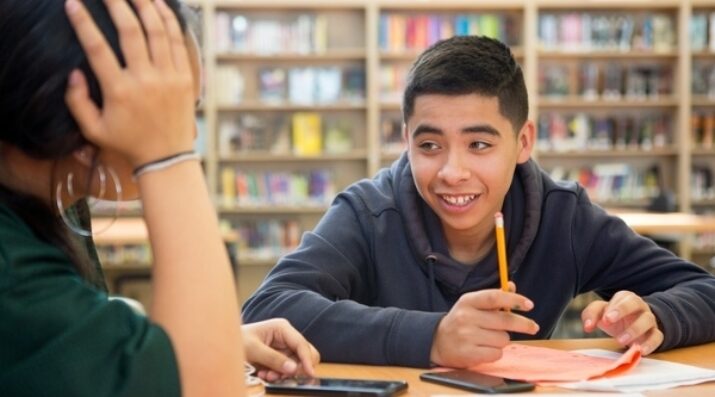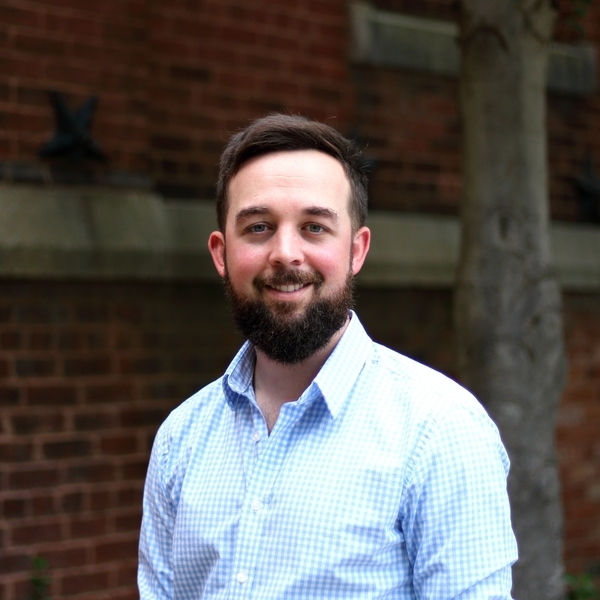Faster, Higher, Stronger: Better Student Relationships by Design
Topics

We’ve all had the experience of truly purposeful, authentic learning and know how valuable it is. Educators are taking the best of what we know about learning, student support, effective instruction, and interpersonal skill-building to completely reimagine schools so that students experience that kind of purposeful learning all day, every day.
Blended learning gives teachers the time to build stronger relationships with students earlier in the year without sacrificing precious time needed to teach content.
Want to build better relationships with your students from Day 1? New ice-breakers and team-builders are not the solution; change how you deliver direct instruction and use that time to get to know your students every day.
My Problem: Not Enough Time
I just completed my tenth year as a full-time classroom teacher. For the first nine, my approach to building student relationships was the same. As many teachers do, I began each year with student surveys and ice breakers. I tried to learn some small detail about a student and throughout the first two weeks would demonstrate that I could recall the detail they chose to share with me—“see I was listening, I do care!” I used memory tricks to learn students’ names within a week. I did other things in the same vein—use student details in powerpoint presentations and real student questions in prompts around the room—to create the feeling that they were connected to the classroom.
Then the real teaching would begin. There was always so much content to teach and I felt I couldn’t sacrifice any real time for fear of missing out on content. I would check in with students as they came through the door—“How’s your day?” I would try and steal moments throughout the lessons to have small conversations with students but those were only moments and often felt fleeting and superficial. I was only one person and my primary responsibility was making sure content was delivered. I couldn’t spend time just talking with students. I had content to get through.
Two years ago, around five months into the school year, a student surprised me. His demeanor was always pleasant and I felt that we had a solid relationship. We had connected over a Space Jam shirt he often wore. He came into my room during lunch to read his Manga novel away from the chaos of the cafeteria. I didn’t know he read for pleasure at all much less Manga. He said on his student survey that he didn’t even like to read fiction. He began to explain the plot of his book and touched on a character—a mother figure—and broke down. It took him another 20 minutes to explain his mother had passed around the start of the school year. I realized I knew almost nothing about him; I knew nothing about why he came to school everyday or what his real goals were. These were important questions, but there was never time to really listen and find answers.
My Solution: Making Time with Blended Learning
Last year I adopted a new, blended learning approach. There are many benefits to teaching with a self-paced, mastery-based, blended approach but one of the greatest, and least obvious, benefits is that this approach gives you the time required to get to know your students better and faster.
In a blended classroom I record my lectures and post them online for students to access when ready. The ‘performance’ part of instruction is accessible through videos in a well-organized virtual classroom space. Students independently know where and how to access content. This means that all the time I used to spend performing is now free.
Just think about all of the time teachers (maybe you) spend in front of their students giving lectures and direct instruction. What if you could use that time to actually get to know your students?
My Results: The Time to Build Relationships
In a blended classroom model, my teacher actions look very different. I often spend my time working in small groups or in a one-on-one setting working through content.
I also use this time to talk with students—about everything. I still check in with students as they come through the door. But in this model, if a student indicates that something is off, I can use class time to check in with them in a meaningful way. Pulling a student to the back of the room or the hallway to chat for ten minutes about why they are on the verge of tears is an example of real relationship building. In a blended classroom, you can be completely present with students and build something better and stronger without sacrificing content for your whole class.
In my first year with blended learning, I initially used intuition to guide how I should use my time building relationships with students. As I tinkered and worked with colleagues, we crafted a best-of list to be as intentional as possible with the time to build those relationships. Here are some of the strategies we use.
I used to think building relationships would always come at the expense of teaching content. Blended learning has shown me that you can make the time to build authentic relationships without sacrificing content. Investing the time in building real relationships will elevate every part of the experience students have in the classroom.
Photo courtesy of Allison Shelley/The Verbatim Agency for American Education: Images of Teachers and Students in Action.




